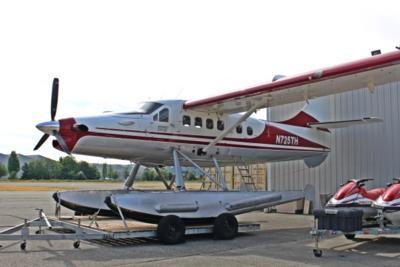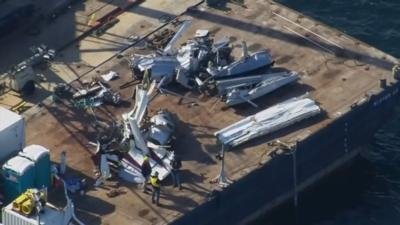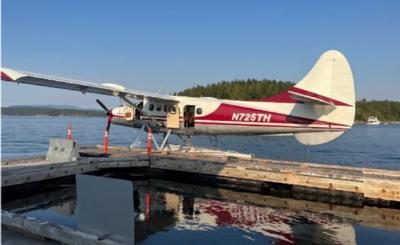September 2022 DHC-3 Mutiny Bay Tragedy Explained
On 04 September 2022, ten people lost their lives when a 55-year-old de Havilland DHC-3 Otter went down in the waters of Puget Sound’s Mutiny Bay off the coast of Whidbey Island.

The Airplane—a turboprop retrofitted, 1967 de Havilland DHC-3 floatplane, registration N725TH—departed Friday Harbor, Washington (FHR) and was en route to Renton Municipal Airport (RNT) when witnesses reported it entered a steep dive and impacted the water with force enough to disintegrate the airframe.
The accident-aircraft was operated by West Isle Air.
Comes now October 2023, and NTSB investigators have attributed the accident to a single defective component—the aircraft’s elevator actuator.
In a press release, NTSB chair Jennifer Homendy set forth: “The Mutiny Bay accident is an incredibly painful reminder that a single point of failure can lead to catastrophe in our skies.”
In the weeks following the accident, the NTSB—suspecting the mishap had been caused by a faulty or disconnected elevator actuator—prevailed upon the FAA to issue an emergency Airworthiness Directive (AD) requiring immediate inspection of the left-hand elevator auxiliary spar on all flying DHC-3 Otters. Subject emergency AD was issued on 04 October 2022, one month after the Mutiny Bay tragedy.

In a subsequent communique pertaining to the accident, the NTSB set forth: “Examination of the airplane revealed that the clamp nut that attached the top eye end and bearing assembly of the horizontal stabilizer trim actuator to the actuator barrel had unscrewed from the barrel. The examination also found that the circular wire lock ring, which was designed to prevent the clamp nut from unscrewing, was not present.”
The Board continued: “We found that if a lock ring is not present to secure the actuator barrel and the clamp nut together, they can become separated, and the actuator would not be able to control the position of the horizontal stabilizer, resulting in a loss of airplane pitch control. Additionally, a secondary locking feature is not required. Requiring such a feature could provide redundancy if a lock ring is not installed, fails, or separates from the clamp nut in flight.
“We also found that, to prevent environmental elements from entering the actuator, maintenance personnel installed a moisture seal between the clamp nut and the eye bolt. The moisture seal, which was not approved by the airplane manufacturer in any documentation, has the potential to create interference in the clamp up of the top eye end and bearing assembly. In addition, the moisture seal increased the rotational friction between the clamp nut and eye bolt, which has the potential to increase the rate of separation between the clamp nut and barrel in the absence of the lock ring.

“The investigation identified maintenance documents and guidance pertaining to the horizontal stabilizer trim actuator assembly that, although found not to be;?causal in this accident, could lead to errors concerning the lock ring installation. For example, maintenance documents do not currently define how many holes are allowed to be drilled into a clamp nut, specify a torque requirement for the installation of the clamp nut, instruct personnel to inspect the clamp nut lock ring hole(s) for damage before installation, or ensure that the lock ring is installed properly.
“We determined that the probable cause of this accident was the in-flight unthreading of the clamp nut from the horizontal stabilizer trim actuator barrel due to a missing lock ring, which resulted in the horizontal stabilizer moving to an extreme trailing-edge-down position rendering the airplane’s pitch uncontrollable.??”
 Aero-TV: DeltaHawks Diesel Power Steps Into the Spotlight
Aero-TV: DeltaHawks Diesel Power Steps Into the Spotlight NTSB Prelim: Mooney Aircraft Corp. M20K
NTSB Prelim: Mooney Aircraft Corp. M20K ANN FAQ: Turn On Post Notifications
ANN FAQ: Turn On Post Notifications ANN's Daily Aero-Linx (12.20.25)
ANN's Daily Aero-Linx (12.20.25) Aero-News: Quote of the Day (12.20.25)
Aero-News: Quote of the Day (12.20.25)





